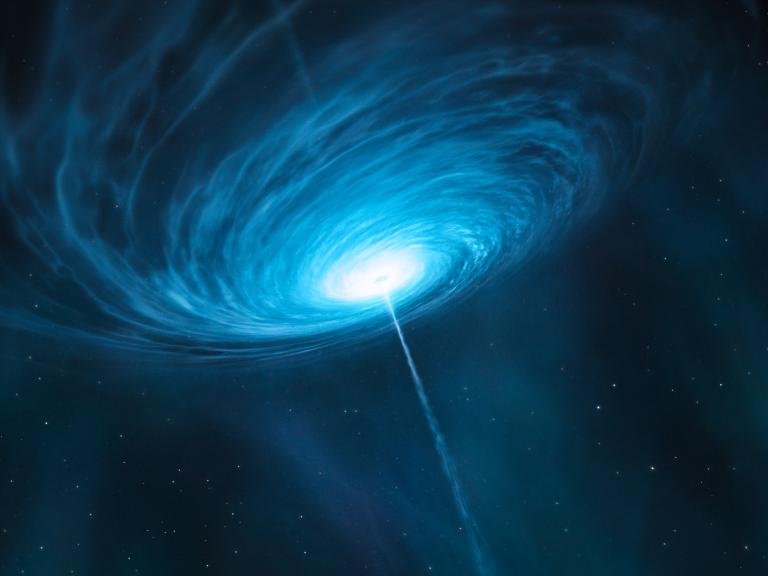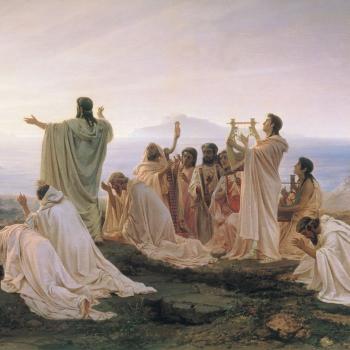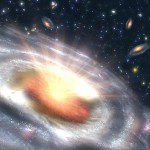
(NASA public domain image)
The current issue of Scientific American contains a clear and approachable summary article by the British astrophysicist and cosmologist Martin Rees, Baron Rees of Ludlow, entitled “How Astronomers Revolutionized Our View of the Cosmos: The universe turns out to be much bigger and weirder than anyone thought” (Scientific American 323/3 [September 2020, 323/3]: 58-64) about the history of modern cosmology. Martin Rees has been the Astronomer Royal since 1995. From 2004 until 2012, he also served as the master of Trinity College, Cambridge, and from 2005 to 2010, he was the president of the Royal Society.
I’m continuing my notes from yesterday’s entry.
Dr. Rees offers a brief account of the serendipitous 1965 discovery, by Arno Penzias and Robert Wilson, of the cosmic microwave background radiation, ancient “light” left over from roughly 300,000 years after the birth of the universe. Now, he says, “we understand, at least in outline, 99.998 percent of cosmic history” (62)
That’s on a huge scale. But, on the far opposite end of the scale, “A series of discoveries has also revealed the history of the elemental building blocks that make up stars, planets and even our own bodies” (62). He spends some time on a famous paper in Reviews of Modern Physics that set forth the way in which most of the atoms of the periodic table are created within stars, by “stellar nucleosynthesis.” Commonly called BBFH after its four co-authors — the great British astrophysicist Sir Fred Hoyle, the married Anglo-American astronomers Margaret Burbidge (1919-2020; she died on 5 April of this year, after a fall, at nearly 101 years of age) and Geoffrey Burbidge (1925-2010), and the American nuclear physicist William Fowler — the paper, says Martin Rees,
calculated why oxygen and carbon, for instance, are common, whereas gold and uranium are rare. Our galaxy, it turns out, is a huge ecological system where gas is being recycled through successive generations of stars. Each of us contains atoms forged in dozens of different stars spread across the Milky Way that lived and died more than 4.5 billion years ago (63).
The process by which gold is forged, by the way, was not determined until much more recently, and in a quite unexpected way. The finding of gravitational waves, expected as an implication of Einstein’s general theory of relativity but not previously observed, by the Laser Interferometer Gravitational-wave Observatory (LIGO), suggested that gold was created during the mergers of pulsar stars.
The article also gives a helpful summation of the remarkable recent progress in discovering exoplanets — none of which were known when I was young. (Granted that telescopes were yet to be invented, still . . .)
More than twenty years ago, Dr. Rees confesses, he predicted that we would understand the nature of dark matter by now. However, we don’t. He still believes that we’ll have the explanation reasonably soon.
The situation is very different with “dark energy,” which became a “thing” in 1998. It’s the mysterious force that seems to be powering the accelerating (!) expansion of the universe. “I am not expecting answers anytime soon,” says Dr. Rees (64). On a brighter note, though, “I expect evidence of a biosphere on an exoplanet within 20 years” (46). (He’s plainly unafraid of going out on a limb.)
I close my notes here with a funny anecdote involving, among others, the prominent cosmologist Andrei Linde, followed by a nice bit of angst-inducing gloom:
About 10 years ago I was on a panel at Stanford University where we were asked by someone in the audience how much we would bet on the multiverse concept. I said that on a scale of betting my goldfish, my dog or my life, I was nearly at the dog level. Andrei Linde, who had spent 25 years promoting [a cosmological theory called] eternal inflation, said he would almost bet his life. Later, on being told this, physicist Steven Weinberg said he would happily bet my dog and Linde’s life (64).
And what will happen to this universe — or multiverse — of ours? Long-range forecasts are seldom reliable, but the best and most conservative bet is that we have almost an eternity ahead with an ever colder and ever emptier cosmos. Galaxies will accelerate away and disappear. All that will be left from our vantage point will be the remnants of the Milky Way, Andromeda and smaller neighbors. Protons may decay, dark matter particles may be annihilated, there may be occasional flashes when black holes evaporate — and then silence. (64)
It almost makes you want to go back to bed, doesn’t it?












